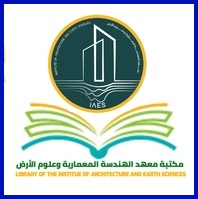مرحبا بكم في الفهرس الإلكتروني لمكتبة معهد الهندسة المعمارية وعلوم الأرض جامعة سطيف
Bienvenue Sur le Catalogue en Ligne de la Bibliothèque de l'institut Architecture et Sciences de la Terre
| Titre : | The Analyses of Transportation Network Study case: Setif City |
| Auteurs : | Mohammed El-Amine BRIK, Auteur ; Boubaker Dr. Khallef, Directeur de thèse |
| Type de document : | texte imprimé |
| Editeur : | Institut d'Architecture et des Sciences de la Terre, 2024 |
| Format : | 74 p. / 30 cm. |
| Accompagnement : | DVD |
| Mots-clés: | Transportation Network, Road Network, Spatial Analysis, GIS, Sustainability |
| Résumé : |
Transportation plays a vital role in shaping the city of Setif, and its efficient management is crucial for the smooth functioning of daily life. The city offers a variety of transportation options, including buses, taxis, the railway system, and the tramway, which are designed to cater to the needs of its inhabitants. The tramway, in particular, is an environmentally friendly and sustainable mode of transportation that promotes socio-economic development and improves the overall quality of life in the city. Transportation infrastructure in Setif not only facilitates the daily commutes of residents but also impacts economic growth by enhancing accessibility to various parts of the city. The integration of diverse transport modes ensures that people have multiple options to choose from, reducing dependency on any single mode and thereby alleviating traffic congestion. The city of Setif faces challenges in transportation due to various factors related to poor management like the rapid growth of its population and the lack of effective transportation management. This has led to congestion, traffic jams, and poor air quality, making it difficult for residents to move around the city efficiently. In addition, public transportation in Setif is limited and no reliable schedule and takes time to get to the place you want. This makes it difficult for residents to rely on public transportation, leading to increased reliance on private vehicles and congestion, also Traffic management is poor, with no effective traffic signals or traffic management systems. This leads to congestion and accidents, making it difficult for residents to move around the city safely. In this study, we will leverage Geographic Information Systems (GIS) technology to address and mitigate transportation challenges in Setif. GIS is a powerful tool that enables the analysis and visualization of spatial data, which is crucial for effective urban planning and management. By applying GIS, we aim to enhance the efficiency and accessibility of transportation infrastructure, ultimately making it more user-friendly for the residents of Setif. |
| En ligne : | https://drive.google.com/file/d/1_-UXfii0IvuICXRCYS7OOMASK11Ftw5b/view?usp=drive_link |
Exemplaires
| Disponibilité |
|---|
| aucun exemplaire |

